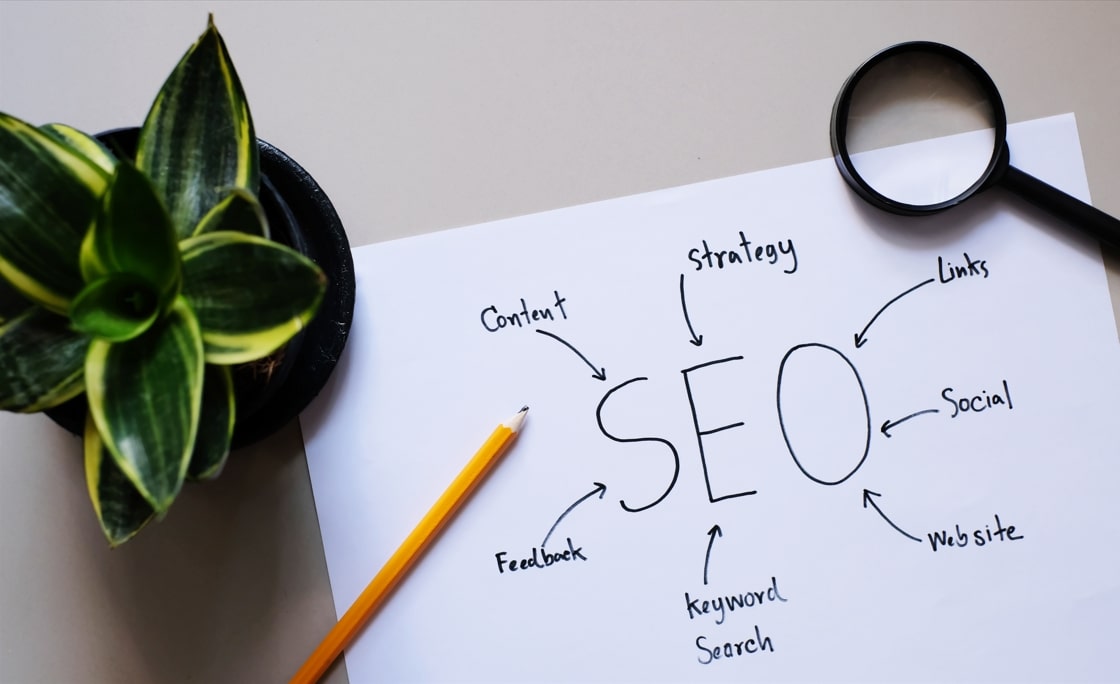Ads scroll by in a blur. Banner blindness is real. So how do you earn attention when audiences actively ignore paid promotions? Organic marketing flips the script: instead of renting visibility, you cultivate it. Through SEO-optimized blogs, viral-worthy social media, and communities built on trust, this approach turns followers into brand ambassadors—no ad spend required.
But let’s be clear: organic marketing isn’t “free.” It demands creativity, consistency, and a willingness to play the long game. In this guide, we’ll dissect actionable tactics, unpack the tradeoffs versus paid ads, and reveal why businesses thriving today aren’t just chasing clicks—they’re planting forests. Ready to grow beyond the algorithm? Read on.
What is organic marketing?
Organic marketing is the art of growing your brand’s presence through unpaid, audience-centric strategies that prioritize authenticity over ad spend. Instead of buying attention with flashy banners or sponsored posts, you earn it by creating content so valuable, entertaining, or educational that audiences voluntarily engage, share, and advocate for your brand. Examples include blog posts ranking atop Google search results, Instagram reels that go viral without paid boosts, or a YouTube tutorial series that becomes a go-to resource in your niche.
At its heart, organic marketing is a long-game philosophy. It’s not about blasting promotions but fostering trust by solving problems, sparking conversations, and nurturing communities. Unlike paid campaigns that vanish when budgets dry up, organic efforts snowball—a well-optimized podcast episode can attract listeners for years, or a single LinkedIn post might ignite a B2B partnership. But here’s the kicker: “organic” doesn’t mean effortless. It demands strategic SEO, data-driven tweaks, and a deep understanding of your audience’s hidden pain points.
List of organic marketing strategies
Forget spray-and-pray tactics—organic marketing requires precision, patience, and a deep understanding of what makes your audience tick. These strategies prioritize quality over quick wins, leveraging evergreen content and community engagement to build lasting relationships. Below, we break down two foundational approaches (with actionable tips) to help you grow organically, without relying on paid ads.
SEO-Optimized Content: Claiming Your Spot on Search Engines

Organic marketing begins with visibility, and nothing delivers sustained traffic like mastering search engine optimization (SEO). This strategy hinges on creating content that answers your audience’s questions before they ask—blog posts, guides, or product pages tailored to niche keywords your competitors overlook. For example, a local bakery might target “gluten-free birthday cakes near [City]” rather than generic “best desserts,” capturing hyper-relevant searches. Tools like Google Keyword Planner or Ubersuggest help identify low-competition, high-intent phrases. But SEO isn’t just keywords: optimize meta descriptions, use header tags to structure articles, and ensure mobile responsiveness. The payoff? A well-ranked blog post can funnel passive leads for years, turning your site into a 24/7 salesperson.
Social Media Community Building: Turning Followers into Fans
Forget follower count—organic marketing on social media thrives on cultivating a tribe. Platforms like Instagram, LinkedIn, or TikTok reward content that sparks conversations, not just consumption. Take Duolingo’s TikTok account: their quirky, meme-driven posts (zero paid promotions) turned a language app into a viral sensation by aligning with Gen Z humor. Start by identifying where your audience hangs out, then post consistently without pitching. Host AMAs (Ask Me Anything), share behind-the-scenes stories, or create user-generated content campaigns (e.g., “Tag us in your workspace setup!”). Algorithms prioritize engagement, so replies, shares, and saves matter more than vanity metrics. Over time, this builds a self-sustaining community that amplifies your brand… authentically.
See SMO in action
Try our solutions with zero commitment
User-Generated Content (UGC): Let Your Customers Be Your Megaphone
Nothing screams authenticity louder than real customers vouching for your brand. UGC campaigns invite audiences to create content for you—reviews, unboxing videos, or social media posts—that showcases your product in action. GoPro’s #GoProAwards is a classic example: fans submit adrenaline-fueled clips shot on their cameras, which the brand shares globally (with credit), creating a loop of free, relatable marketing. To kickstart UGC, run contests (“Share a photo with our product for a chance to win!”), feature customer stories in your blog, or repost glowing testimonials. Not only does UGC build social proof, but platforms like Instagram and TikTok reward this “casual” content with higher organic reach compared to polished ads. The result? A scalable, trust-driven strategy where your customers become your most credible salespeople.
Guest Blogging: Borrow Authority to Build Your Own
Partner with industry blogs or niche websites to publish expert-driven articles—no paid sponsorships, just pure value exchange. A sustainable fashion brand might contribute a piece on “5 Ethical Fabrics Revolutionizing the Industry” to a popular eco-living blog, earning a backlink to their site and exposure to a curated audience. The goal? Position your brand as a thought leader while tapping into another platform’s trust. Tools like Ahrefs or Moz help identify high-domain-authority sites in your niche. Pitch topics that align with their audience’s interests, not your sales agenda. Over time, consistent guest posts funnel referral traffic and boost your site’s SEO, all while bypassing paid ad costs.
Educational Webinars: Teach Your Way to Trust
Host free, niche-focused webinars to showcase expertise while solving pressing problems. A cybersecurity startup might run a live session on “Blocking Zero-Day Exploits for Small Businesses,” attracting IT managers hungry for actionable insights. Promote the event through existing channels (email lists, organic social posts) and collaborate with micro-influencers to share it with their followers. Record and repurpose the webinar into YouTube tutorials, podcast snippets, or blog summaries—maximizing reach without repeating effort. Unlike paid ads, webinars build credibility through depth, transforming passive viewers into long-term customers who’ve already experienced your value firsthand.
Email Newsletter Cultivation: Nurturing Loyalty One Inbox at a Time

While inboxes overflow with promotions, a well-crafted email newsletter cuts through the noise by offering exclusive value to subscribers who willingly opt in. Organic email marketing starts with a lead magnet—think free e-books, template bundles, or webinar access—that entices visitors to hand over their contact details. For instance, a fitness coach might offer a “7-Day Meal Plan” in exchange for emails, then deliver weekly tips, success stories, and personalized advice to nurture long-term trust. Tools like MailerLite or ConvertKit automate segmentation, ensuring busy parents receive different content than fitness enthusiasts. The key? Prioritize relevance over frequency. A monthly newsletter packed with actionable insights outperforms daily spam. Over time, this builds a hyper-engaged audience primed to convert—all without a dollar spent on ads.
Pros and Cons of Organic Marketing: Balancing Patience and Payoff
The Upsides
Organic marketing thrives on authenticity, turning casual browsers into loyal advocates—but only if you’re willing to play the long game. Its cost-effectiveness shines for brands with tight budgets; instead of funneling cash into ads, you invest in evergreen assets like SEO-optimized guides or a viral TikTok series that compounds reach over years. Take Glossier, which built a billion-dollar beauty empire largely through user-generated content and community-driven social campaigns. Organic efforts also forge trust: 88% of consumers trust online reviews as much as personal recommendations (BrightLocal), making strategies like guest blogging or customer testimonials invaluable. Plus, the traffic snowball effect is real—HubSpot found that older blog posts generate 80% more monthly views than new ones, proving that patience pays.
The Downsides
Yet organic marketing isn’t a magic bullet. Its slow burn tests patience; ranking on Google’s first page can take 6+ months, and growing a TikTok following from zero demands relentless creativity. You’re also at the mercy of ever-shifting algorithms—Meta’s 2023 update tanked reach for brands relying solely on Instagram organic posts, while Google’s core updates can bury your carefully crafted content overnight. Saturation is another hurdle: in crowded niches like finance or fitness, standing out without paid boosts often requires Herculean quality. And let’s not underestimate the grind—consistent blogging, community moderation, and UGC curation demand hours that many small teams simply don’t have.
The Sweet Spot
Organic marketing works best when paired with strategic paid efforts. Use ads to amplify your top-performing organic content (like a webinar replay) or target keywords your blog already ranks for. This hybrid approach lets you plant seeds and speed up the harvest.
Organic Marketing vs. Inorganic Marketing: A Quick Compare-and-Contrast
Organic marketing:
| Organic Marketing | Inorganic Marketing |
| Fuel: Time, creativity, patience | Fuel: Budget, bids, ad spend |
| Focus: Building long-term trust and community | Focus: Immediate visibility and conversions |
| Pros: – Sustainable growth – Higher audience trust (non-promotional) – Cost-effective long-term | Pros: – Instant traffic and scale – Precise audience targeting – Full control over messaging |
| Cons: – Slow results (months/years) – Algorithm-dependent – Labor-intensive | Cons: – Costs escalate quickly – Trust gaps (seen as “salesy”) – Stops working when funding halts |
When to Use Each:
- Go organic for building authority, nurturing loyal fans, or tight budgets.
- Go inorganic for launching products, time-sensitive promotions, or penetrating saturated markets.
- Pro tip: Blend both—use paid ads to amplify your best-performing organic content (e.g., turning a viral reel into a targeted ad).
See SMO in action
Try our solutions with zero commitment
Cultivate, Don’t Just Capture
Organic marketing isn’t a shortcut—it’s a mindset. Like nurturing a garden, it demands tending to relationships as much as tactics. Glossier didn’t become a beauty juggernaut by chasing trending ads; they empowered their community to co-create the brand. Duolingo didn’t buy its way to TikTok fame; it leaned into organic wit and relatability.
Yes, the grind is real. Algorithms shift. Competitors swarm. But while paid ads flicker out when budgets drop, organic strategies—whether a meticulously optimized blog or a user-generated content loop—keep yielding returns long after the work is done.
So, will you keep renting attention, or start earning it? Blend SEO with social savvy, pair patience with persistence, and remember: in a world of algorithm angst, the brands that thrive are those planting seeds, not just chasing harvests. Your audience isn’t a demographic to target—they’re a community to grow with. Ready to dig in?


